Cotton thistle identification and control
About this weed
Cotton thistle is a regulated Class B noxious weed. This means control is required in King County under the state noxious weed law. Cotton thistle is also on the Washington quarantine list.
Cotton thistle’s Latin name is Onopordum acanthium and it is in the aster (daisy) family. Other common names include Scotch thistle and wooly thistle.
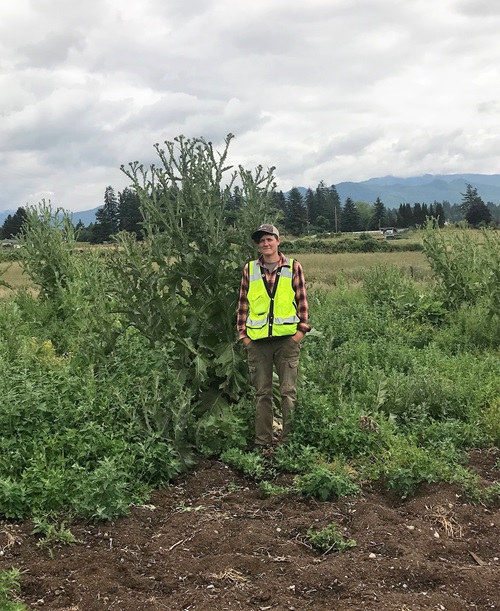
Why it’s a problem
Cotton thistle forms dense stands in pastures, rangeland, and other open areas. The large, spiny plants reduce forage for wildlife and create barriers excluding animals from the landscape and access to water.
Plant description
Cotton thistle is an annual (1 year life-cycle) or biennial (2 year life-cycle) that grows in meadows, pastures, and rangelands. It may also grow alongside streams and rivers.
The leaves are gray-green, wooly, and spiny, and reach up to 2 feet long and 1 foot wide.
Stems grow 8 feet tall and have ribbon-like, spiny "wings."
The flowers are 2 inches wide, dark pink to lavender, and appear in groups of 2 or 3 at stem ends. Cotton thistle flowers in mid-summer.
Cotton thistle reproduces by seed. Each plant can produce up to 40,000 seeds.
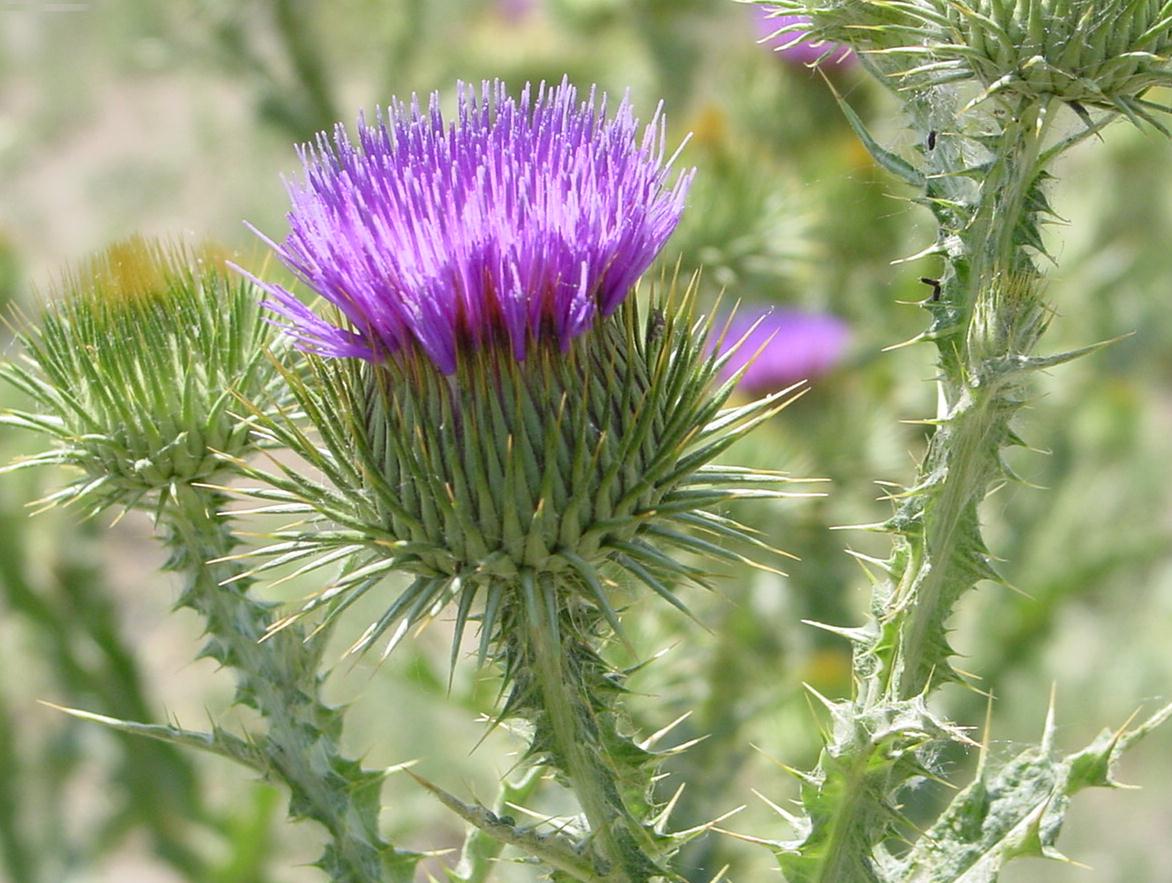
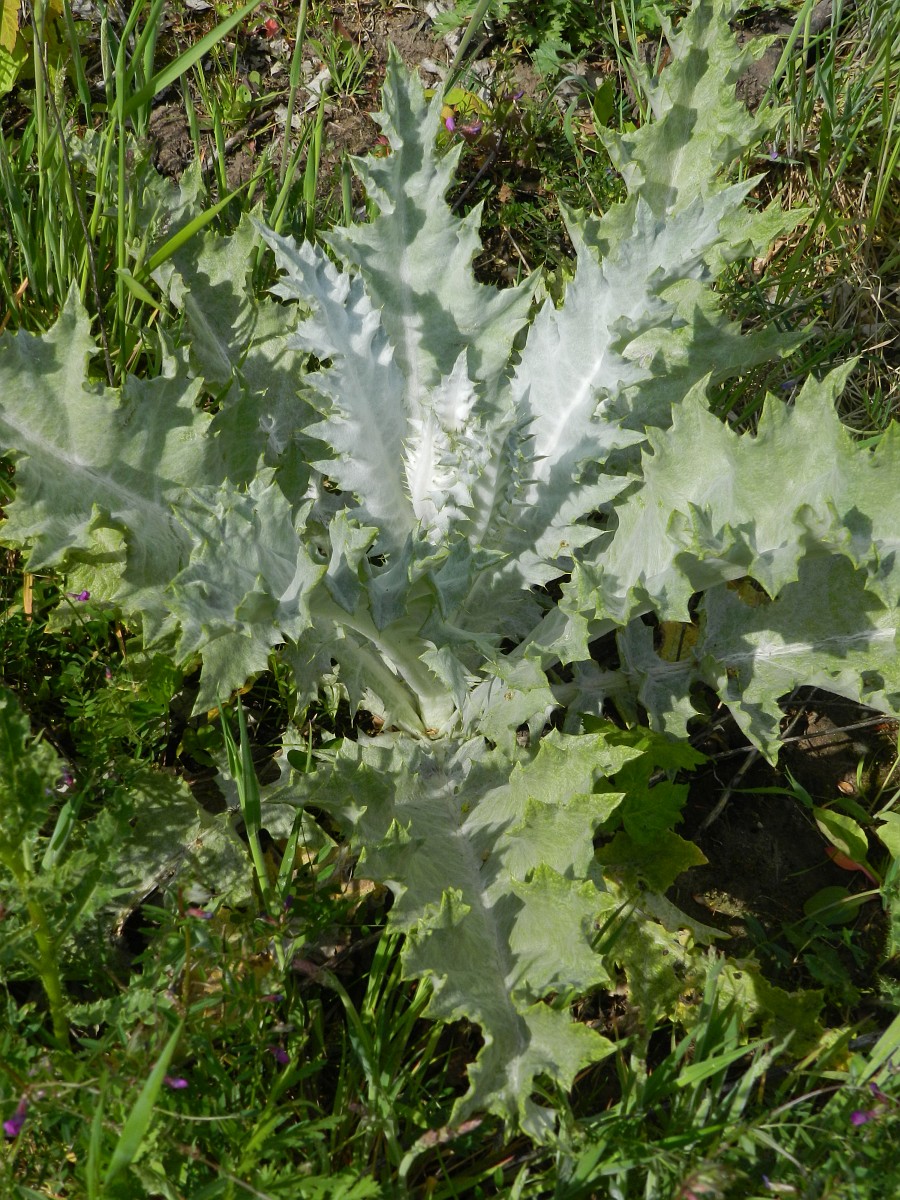
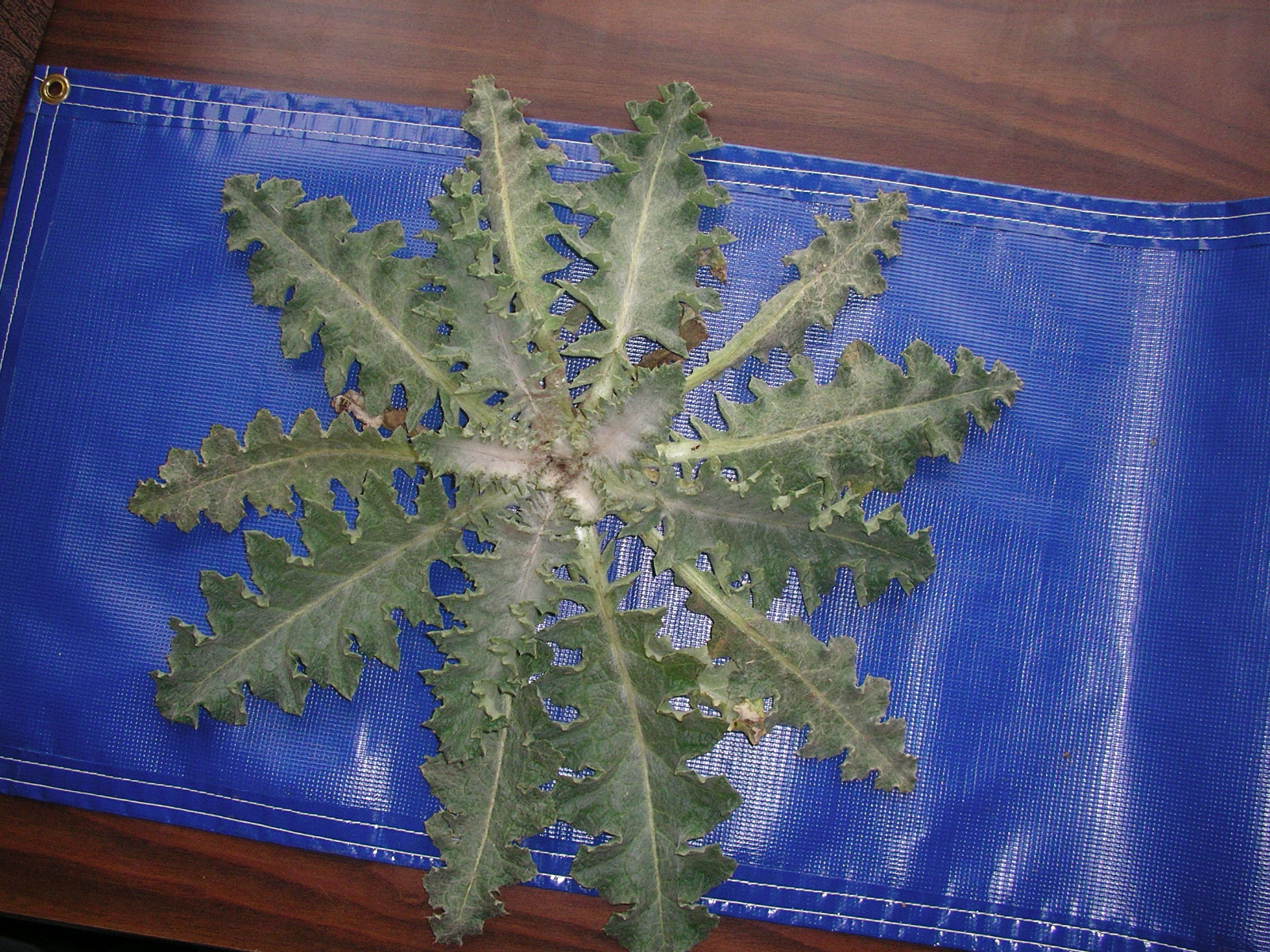
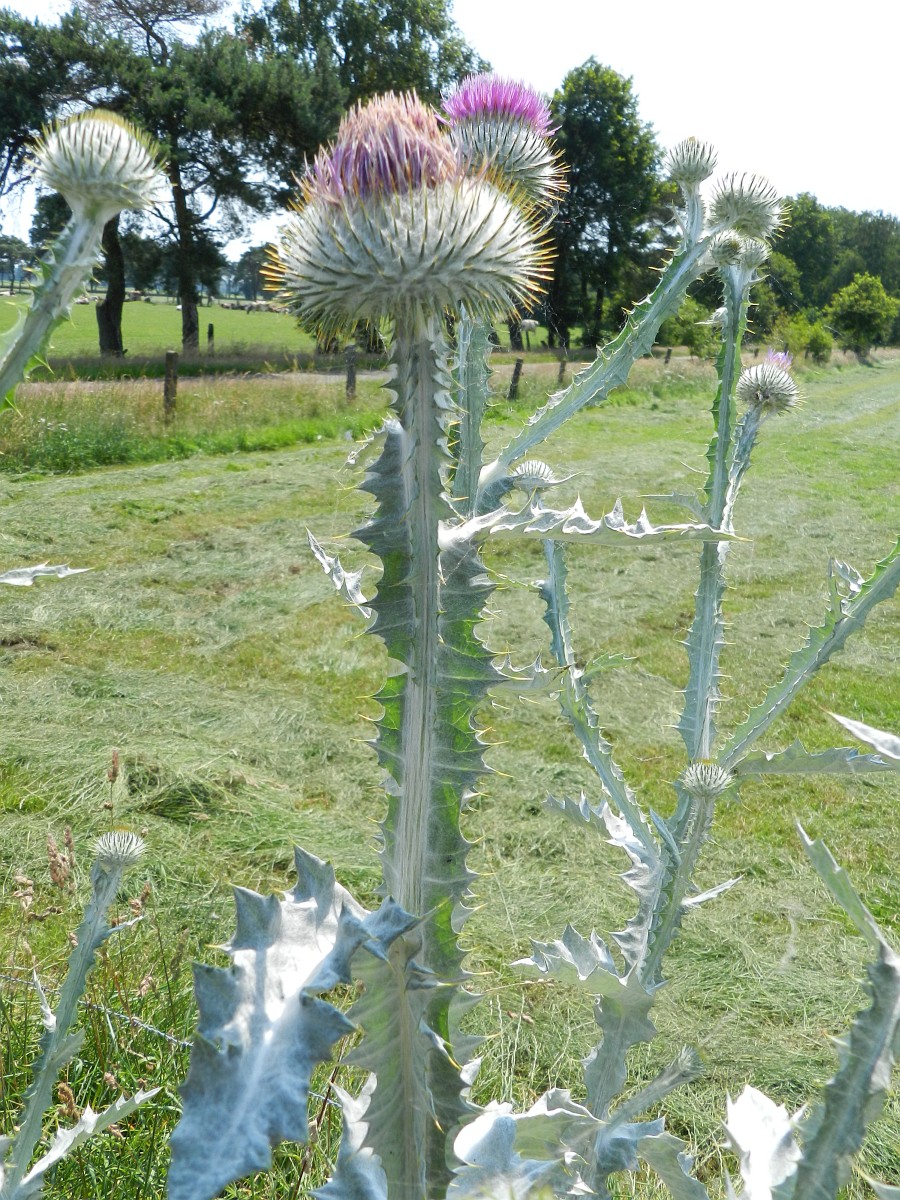
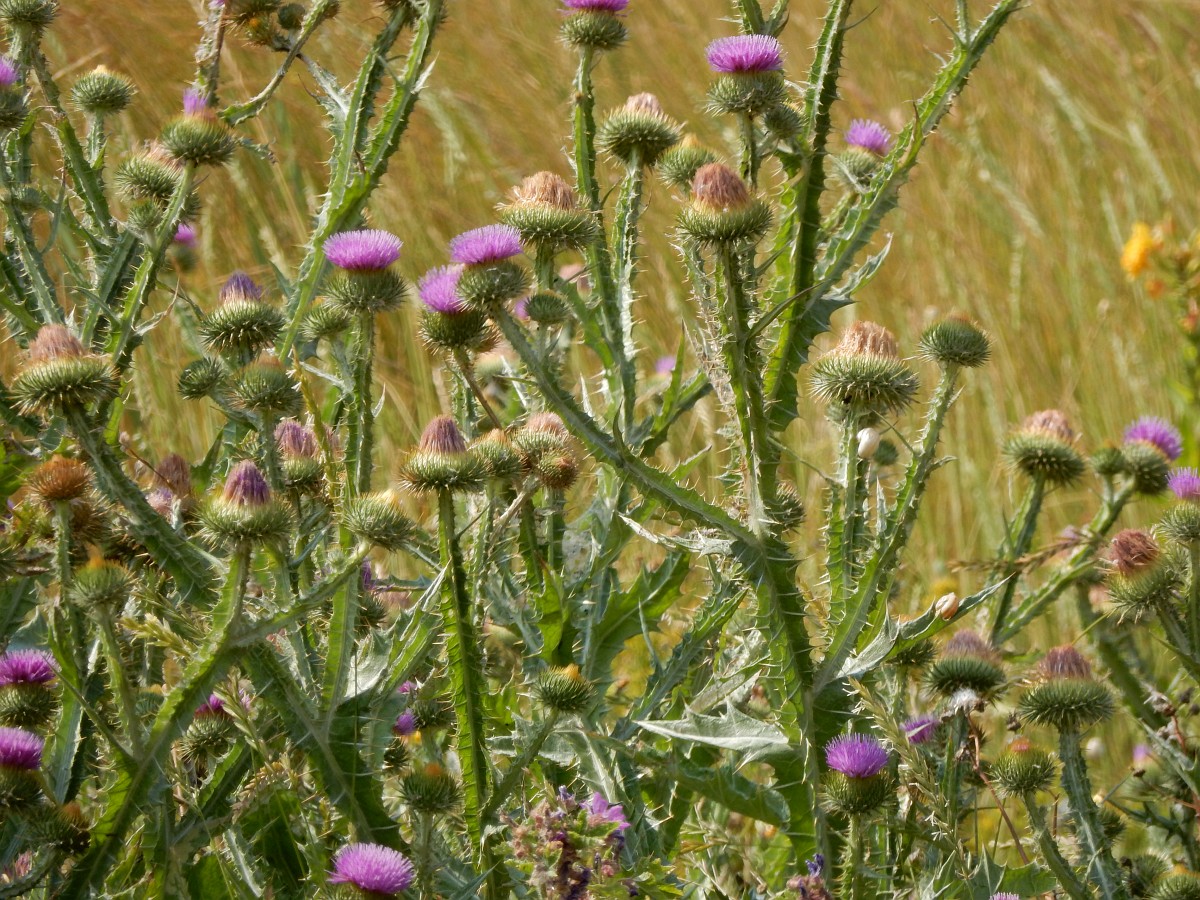
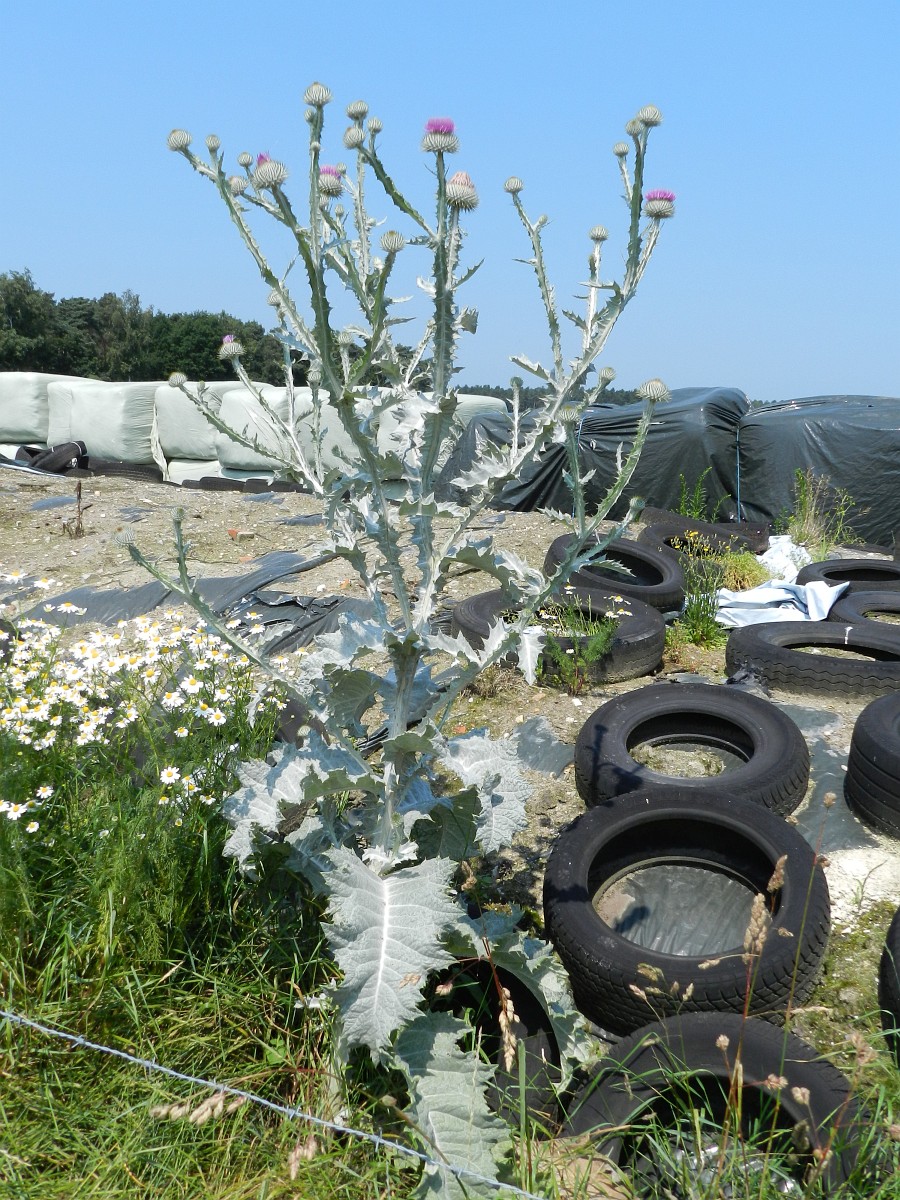
Be aware of look-alike plants
Cotton thistle may be confused with bull thistle, which is more common in western Washington. Bull thistle also has some spiny wings along the stems, but not the entire length like scotch thistle. Mature bull thistle plants only reach about 3-5 feet tall.
When in doubt, take photos and share them with us or report them on iNaturalist.
What to do if you find it
Cotton thistle is not established in King County and we have an opportunity to stop it from spreading if we act quickly. Property owners are required to control common thistle on lands that they manage. Please notify us if you see cotton thistle growing in King County. Our program staff can provide you with site-specific advice on how best to remove it. We map all known locations of regulated noxious weeds to help locate new infestations in time to control them.
Control methods
We recommend using a combination of methods to control noxious weeds. In areas with few weeds, it is important to act quickly before they become harder to control. Make a long-term plan as it often takes several years to get rid of most weeds. Start in the least infested areas first and then move into more heavily infested areas.
Cultural control
Maintaining healthy pasture soils and competitive grasses can be effective in controlling cotton thistle.
Goats will graze cotton thistle plants and eat the flowers. Sheep may feed on small rosettes (a circular arrangement of leaves growing close to the ground).
Manual control
Small infestations can be dug out. Dig out the plant's taproot with a shovel below the soil's surface. Bag up and trash any cut flowerheads because they may still bloom and release seed if left on the ground.
Mechanical control
Repeated mowing may prevent seed production but do it before flowering or plants will recover and still flower. It is best to cut and mow plants when they have tight green buds (pre-flower).
Chemical control
Stay safe when using herbicide:
- Always read the label before use.
- Wear a long-sleeved shirt, long pants, shoes, and eye protection.
- Follow state and local regulations.
Disposal instructions
Pulled plants can be left onsite to decompose, except for flower and seed heads. Always remove flower and seed heads if present and put them in the garbage, not compost which does not get hot enough to kill all the seeds.Noxious Weed Disposal - Washington State Noxious Weed Control Board

 Translate
Translate